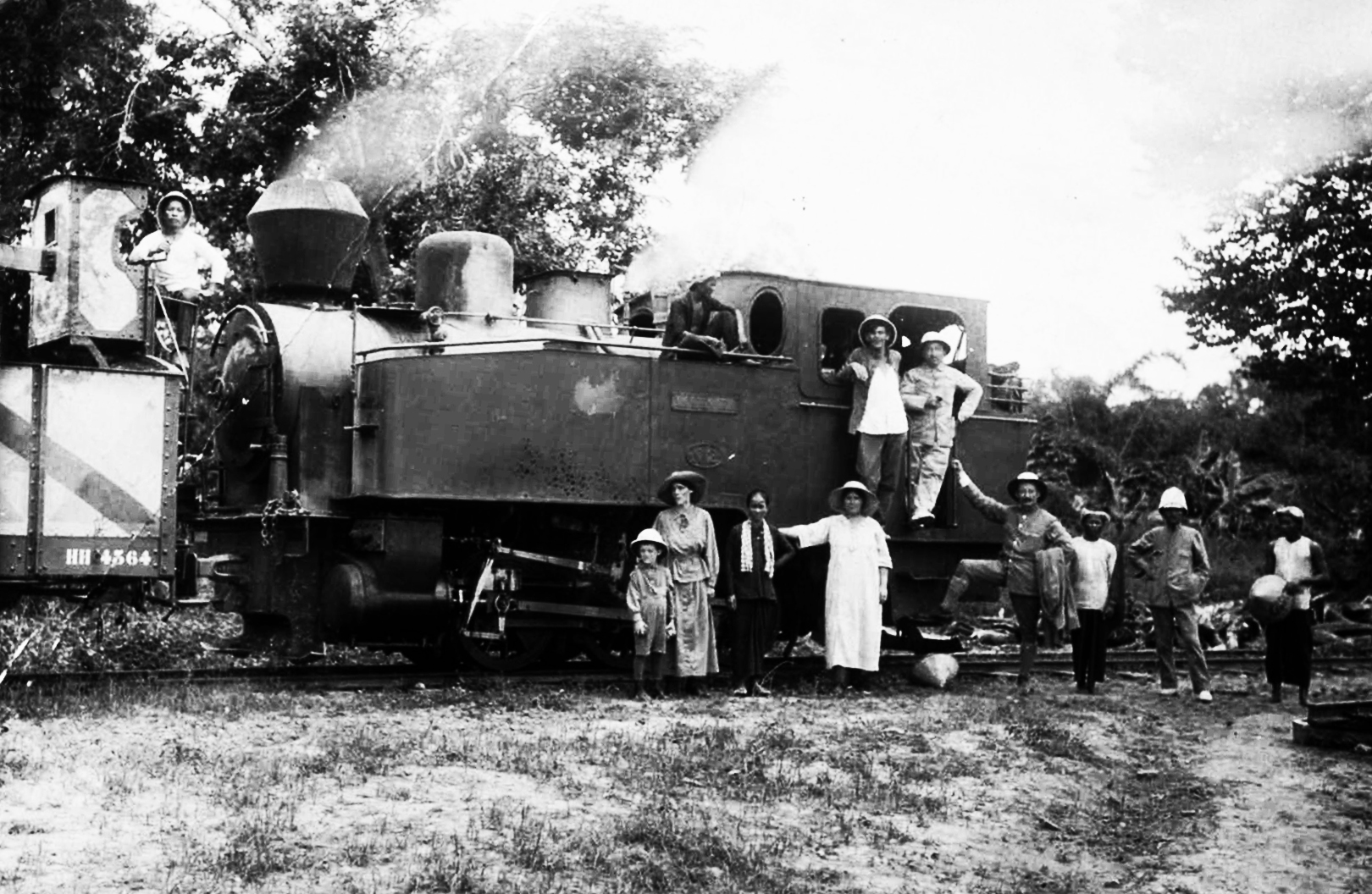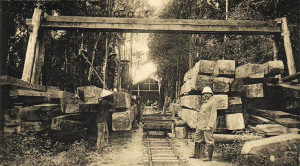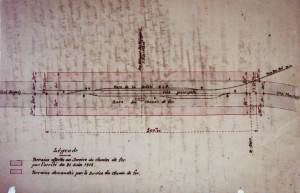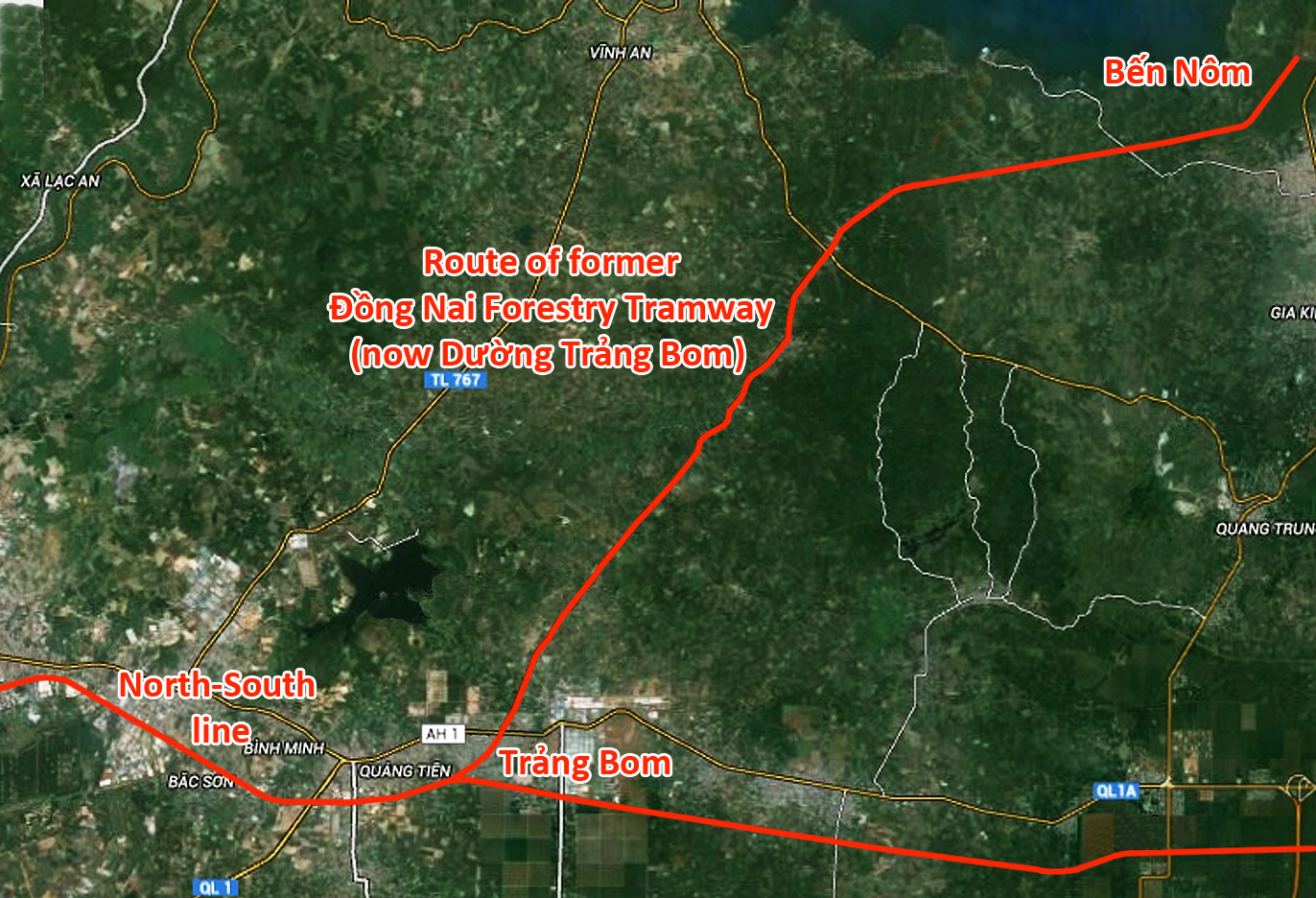
Many thanks to Michael Pass and his colleagues Eric Fresné, Rob Dickinson, Iain Hutchinson, Helmut Dahlhaus, Claus Gaertner, Martin Murray, John Raby, Geoff Coward, Ray Schofield, Alan Brown and Chris Yapp for identifying this as one of the two CFTD Borsig 0-6-0T locomotives
Commercial exploitation of the forests was an economic priority for the Cochinchina government, and in the early 20th century, several private tramway lines were established to facilitate this work. Perhaps the best known was the Đồng Nai Forestry Tramway, set up in 1911 serve the Biên Hòa industrielle et forestière company (BIF).

A forestry exploitation in Cochinchina
In October 1910, the Biên Hòa industrielle et forestière (BIF) company (established in 1908) signed a contract with the Cochinchina authorities to exploit 30,000 hectares of forest in Đồng Nai Province.
As part of the contract, they undertook to build a 21.9km branch line to transport wood and other forest products from its main logging camp at Bến Nôm to Trảng Bom on the Sài Gòn–Nha Trang line.
In the following year the company also opened a lime acetate factory at Tân Mai, connected to the main line by a 0.5km rail spur.
The Compagnie française des tramways du Donnaï (French Tramway Company of Đồng Nai, CFTD) was set up by BIF in 1911 to run both of these lines.

A 0.5km spur off the main line east of Biên Hòa Station led into BIF’s Tân Mai lime acetate factory
Conceived from the outset as a 1m-gauge line in order that its wagons could continue their journey from Trảng Bom to Sài Gòn on CFI metals, the Đồng Nai tramway incorporated four short forestry spurs with a combined length of 3.144km. Construction took two years and the branch opened in late 1913.
Three years later, in order to accommodate the construction of a larger and better-equipped interchange between the branch and the main line, the colonial authorities agreed to relocate Trảng Bom Station nearly 2km to the west of its original position.
The post-World War I economic recession hit both BIF and CFTD badly, and in 1922, the latter attempted unsuccessfully to persuade the authorities to buy back the tramway franchise.

Plans for the relocated Trảng Bom Station (1916) where the tramway met the main line
An inventory of rolling stock undertaken at this time revealed that the company owned four locomotives. These were two Borsig 0-6-0Ts, “Bienhoa No. 1” and “Bienhoa No. 2,” each weighing 23 tons; a 14-ton Ateliers de Tubize (Belgium) locomotive; and a 5.3-ton Decauville locomotive named “Bébé,” which was used exclusively in the acetate factory at Tân Mai.
The Đồng Nai tramway underwent comprehensive refurbishment in 1925-1926, and although its later history is poorly documented, the line is known to have continued in operation for at least another four decades.
Never a profitable concern, BIF was hit badly by the Great Depression, and in 1939 it was split into two companies, Les Caoutchoucs du Donnaï (Đồng Nai Rubber) and Forêts et scieries de Biên Hòa (Forests and Sawmills of Biên Hòa). The tramway company was incorporated into the latter.

Mishap on the CFTD line, c 1920, photos by Marcel Auguste Fermé, from “La mystérieuse locomotive de la BIF.” in Les carnets de Bái Lìdé http://bailide.blogspot.com/2009/03/la-mysterieuse-locomotive-de-la-bif.html
In 1958, both companies were purchased by the South Vietnamese authorities, and in subsequent years the Trảng Bom–Bến Nôm branch line was subsumed by the national rail operator, Hỏa xa Việt Nam (HXVN). It continued in operation until at least 1968.
Today no traces of the old line have survived. In the 1970s, most of its former trackbed was transformed into the Đường Trảng Bom.

The route of the former tramway line superimposed onto a modern Google map
Tim Doling is the author of The Railways and Tramways of Việt Nam (White Lotus Press, Bangkok, 2012) and also gives talks on Việt Nam railway history to visiting groups.
A full index of all Tim’s blog articles since November 2013 is now available here.
Join the Facebook group Rail Thing – Railways and Tramways of Việt Nam for more information about Việt Nam’s railway and tramway history and all the latest news from Vietnam Railways.
You may also be interested in these articles on the railways and tramways of Việt Nam, Cambodia and Laos:
A Relic of the Steam Railway Age in Da Nang
By Tram to Hoi An
Date with the Wrecking Ball – Vietnam Railways Building
Derailing Saigon’s 1966 Monorail Dream
Full Steam Ahead on Cambodia’s Toll Royal Railway
Goodbye to Steam at Thai Nguyen Steel Works
Ha Noi Tramway Network
How Vietnam’s Railways Looked in 1927
Indochina Railways in 1928
“It Seems that One Network is being Stripped to Re-equip Another” – The Controversial CFI Locomotive Exchange of 1935-1936
Phu Ninh Giang-Cam Giang Tramway
Saigon Tramway Network
Saigon’s Rubber Line
The Changing Faces of Sai Gon Railway Station, 1885-1983
The Langbian Cog Railway
The Long Bien Bridge – “A Misshapen but Essential Component of Ha Noi’s Heritage”
The Lost Railway Works of Truong Thi
The Mysterious Khon Island Portage Railway
The Railway which Became an Aerial Tramway
The Saigon-My Tho Railway Line

